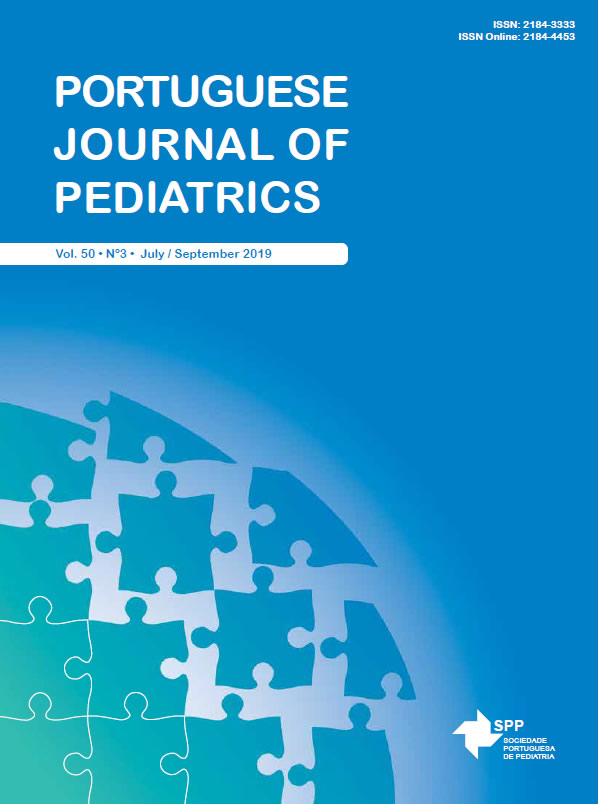Adverse Events in Long-Course Intravenous Antibiotic Therapy for Pediatric Osteoarticular Infections
Date of submission: 12-11-2018 | Date of acceptance: 01-02-2019 | Published: 15-07-2019
DOI:
https://doi.org/10.25754/pjp.2019.15432Abstract
Background: Osteoarticular infections are commonly treated with long-course intravenous antibiotic therapy, leading to prolonged hospital stays. The aim of our study was to describe adverse events, namely adverse drug reactions, catheter associated complications and nosocomial infections, in paediatric patients treated for osteoarticular infections.
Methods: Retrospective observational and analytical study of pediatric osteoarticular infections from 1994 to 2014 in a tertiary hospital. Patients were divided in two groups based on the presence of adverse events.
Results: There were 134 patients treated with intravenous antibiotic therapy, with a median length of 19.5 (IQR: 14.0-27.3) days. Adverse events occurred in 73,1% of patients (n=98). Adverse drug reactions (n=67) occurred in 50,0% of the patients and were associated with longer duration of parenteral treatment and vancomycin prescription. Catheter associated complications (29,1%; n=39) included catheter-infiltration (13.4%), thrombophlebitis (9.7%) and cellulitis (6.0%). Thirty-three patients had nosocomial infections, mainly gastrointestinal (11.2%) and respiratory (8.2%). Comparing the groups with and without adverse events, there were no significant clinical or analytical differences, at admission and after starting antibiotic therapy, except for the duration of iv treatment and total length of hospital stay, which were significantly higher in patients with adverse events.
Conclusions: Long-course intravenous antibiotic therapy for osteoarticular infections is frequently associated with adverse events. In patients with clinical and analytical improvement, early transition from intravenous to oral treatment should be considered in order to reduce the incidence and morbidity of these complications.









